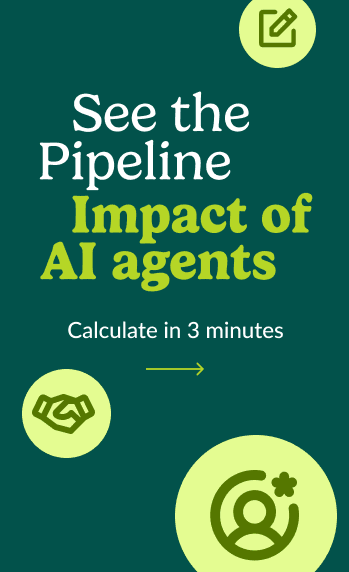What is growth marketing?
Published:

What is growth marketing?
Over the last few years, growth marketing has helped redefine the goal of marketing.
Now, success doesn’t just come from scaling the top of the funnel and acquiring new customers. It’s about acquiring the right customers, increasing customer retention, and using all available insights to drive more engaged customers.
But what does growth marketing actually mean? What does the role of a growth marketer entail? And how is it different from traditional marketing efforts? How can growth marketing strategies overhaul your overall marketing approach for the better?
A Definition for Growth Marketing
Growth marketing is the practice of combining customer data, market insights, and creativity to better understand your buyers and amplify every step of the customer journey for them.
Growth marketers spend an incredible amount of time understanding their buyers and customers, whether in formal customer interviews or listening in on dozens of sales calls each month. This enables them to develop powerful insights on where big pain points are and where they go for information. They then put all of those pieces together in a digital marketing plan and test creative concepts on the channels most used by their buyers, from top-of-the-funnel social media interactions to free trial plans on the Chrome store.
Through testing and incremental improvement, growth marketers not only acquire new customers at an exponential rate, but also drive more cross-selling, upselling, and other revenue expansion opportunities. In short, they use data combined with user behavior to deliver experiences that resonate throughout the entire customer lifecycle and reduce churn.
Growth Marketing vs. Traditional Marketing
Traditional marketing focuses on the top of the funnel, often with activities that drive short-term wins. But growth marketing is focused on the marketing funnel as a whole.
At every stage of the funnel, growth marketers tap into data and work with fellow employees to gain better insights, and experiment with new long term strategies. They work tirelessly to find innovative ways to drive user acquisition, engage and retain customers, and ultimately turn them into brand champions.
Startup advisor Andy Johns puts it this way, “Finance owns the flow of cash in and out of a company. Growth owns the flow of customers in and out of a product.” In other words, growth marketers assess and optimize every customer interaction — whether it’s your checkout, your product, or beyond.
Growth Marketing vs. Growth Hacking
Growth hacking is another way to unlock customer growth. While some people sometimes use this in place of the term “growth marketing,” it actually represents a very different flavor of growth.
There’s an even more important difference though: Growth hacking isn’t a comprehensive approach. While a growth hacker might come in and provide some quick fixes (and unpredictable streams of customer acquisition), a growth marketer will offer a long-term exponential approach to growth, based on an objective analysis of opportunities for the industry. Read: growth marketing is about accelerating qualified demand, while growth hacking is all about quantity and speed.
In summary, growth hacking is a trendy term that is already fizzling out, while growth marketing is a growing field that will only become more and more relevant.
Key Growth Marketing Strategies
So how do you actually do growth marketing?
Well, no matter what kind of business you run, your approach should include these five foundational growth marketing strategies:
1. Customer Feedback
The overall goal of your growth marketing strategy is to enhance your customer relationships. This means you need to know what parts of the experience are frustrating your customers — the things that could be negatively impacting word-of-mouth referrals, online reviews, retention rates, etc.
While data does deliver insights, hands-on customer interactions can provide feedback much quicker. Use surveys, interviews, social listening, and focus groups to find out what customers think. You can ask them about their experience as a customer or even get their opinion on your next marketing campaign to find out if it’s truly relevant and emotionally engaging.
2. A/B Testing
In order to continuously improve the customer journey, growth marketers rely on experimentation. Most of these experiments are set up using the A/B approach, meaning that you test option A against option B. By directly comparing these two options, you can ensure you drive as much engagement as possible by choosing the right home page headline, TikTok hook, or creative for a LinkedIn ad.
That’s why marketers who know how to set up informative, meaningful tests will beat out their competitors. As Sean Ellis, Author of Hacking Growth, puts it, “For meaningful growth, start-ups must completely change the rules of traditional channels or innovate outside of those growth channels. They have to dig deep creatively, and relentlessly test new ideas. If they don’t figure it out quickly, they will go out of business.”
3. Multi-Channel Marketing
Many aspects of growth marketing examine the potential of every channel and combines them into one ideal customer experience. And that starts with investing in the right channels.
You can use the RICE method to prioritize new potential channels by scoring each for potential reach, impact, confidence, and effort. After you’ve picked a new channel to tackle, make sure to test your results — compare the engagements, traffic, and conversion rates of the channel against your already successful channels to see if the new channel is worth your time.
No matter what channels you use, make sure that the multi-channel experience is consistent and relevant. For instance, if a customer has been interacting with your email marketing about a certain product launch, you might personalize the home page of your website to sell them that specific product.
One of the easiest ways to provide a helpful multi-channel experience is to implement a Conversational Marketing platform. This is because you can set up customized chatbots for every web page so that, no matter what channel they’re coming from, visitors can engage in a conversation that’s relevant to that page. You can personalize chat prompts for your customers and target accounts, making the buying experience feel tailored to them.
4. Customer Lifecycle
Successful growth marketing leaves no channel unturned. You can say the same for every stage of the customer lifecycle.
For growth marketers, the big question here is: What stages of the customer lifecycle hold opportunities for growth? The answers lie in your data.
Don’t be afraid to integrate or wrangle data sources to extract insights. Partner up with in-house data scientists, marketing operations managers, CFOs, revenue leaders, and other data experts to flesh out your own audits and assessments of the customer lifecycle. Then, run experiments to uncover new opportunities, such as testing UX improvements or changing up how you explain certain features during new customer onboarding.
5. Data-Driven Content
Growth marketers are big believers in the power of content. After all, you need great content to back up just about any experiment.
Want to get more email subscribers to request a demo? You’ll need better content to improve how you acquire, nurture, and sell to leads. Want to lower your customer acquisition costs from LinkedIn ads? You’ll need to offer content your audience actually cares about.
The best growth marketers are constantly adding to their swipe files by looking at content produced by competitors and industry experts, so they can gain inspiration, quickly implement new content, and test engagement from various audience segments.
Growth Marketing Campaign Examples
Time to get inspired.
These four growth marketing campaign examples might just offer some insight into how you can approach your next growth marketing campaign or experiment.
MasterClass’s Facebook Ads
MasterClass is the go-to for celebrity and expert classes on various hobbies and personal development topics. At any given time, the company is running dozens of ads on their Facebook page. A quick check of their current ad library pulls up over 820 results.
As MasterClass releases new classes featuring new experts, they’ll test a variety of ads. For example, these two video ads use a different text overlay style for the same class and offer — buy one membership, get one free.
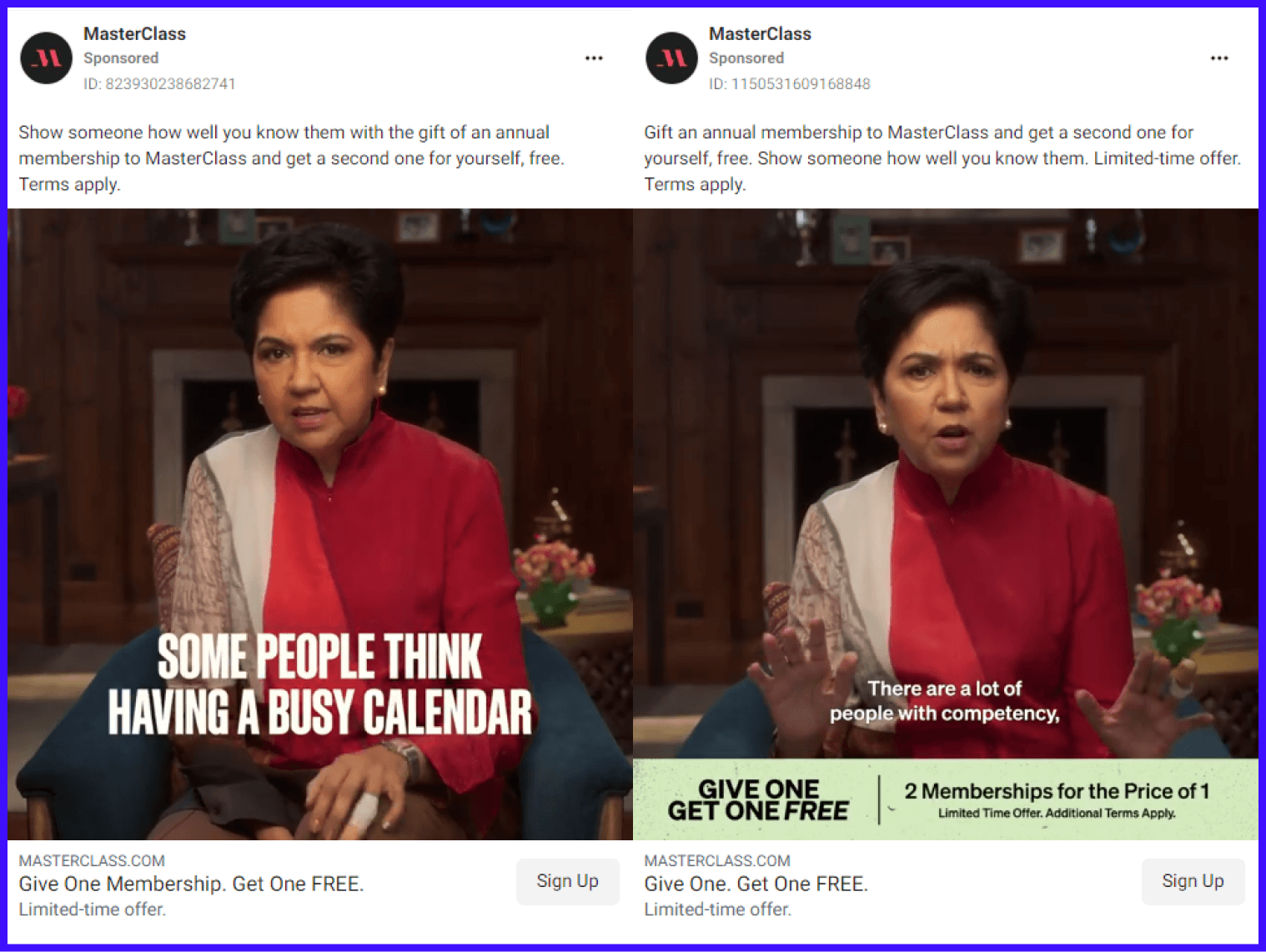
By perusing their ad library, it’s clear that they test everything — different calls-to-action, description texts, video styles, video clips, offers…the list goes on. Little tweaks can make a big difference (even the font size of your video captions), so always be testing new things.
TripActions’s Home Page
Your website is where new visitors, hot leads, and existing customers come to interact with your brand the most. It’s your online hub — and the copy and creative you use can have a huge impact on your growth.
According to the Wayback Machine, TripActions’s home page used to jump straight into a demo video after the initial hero section.
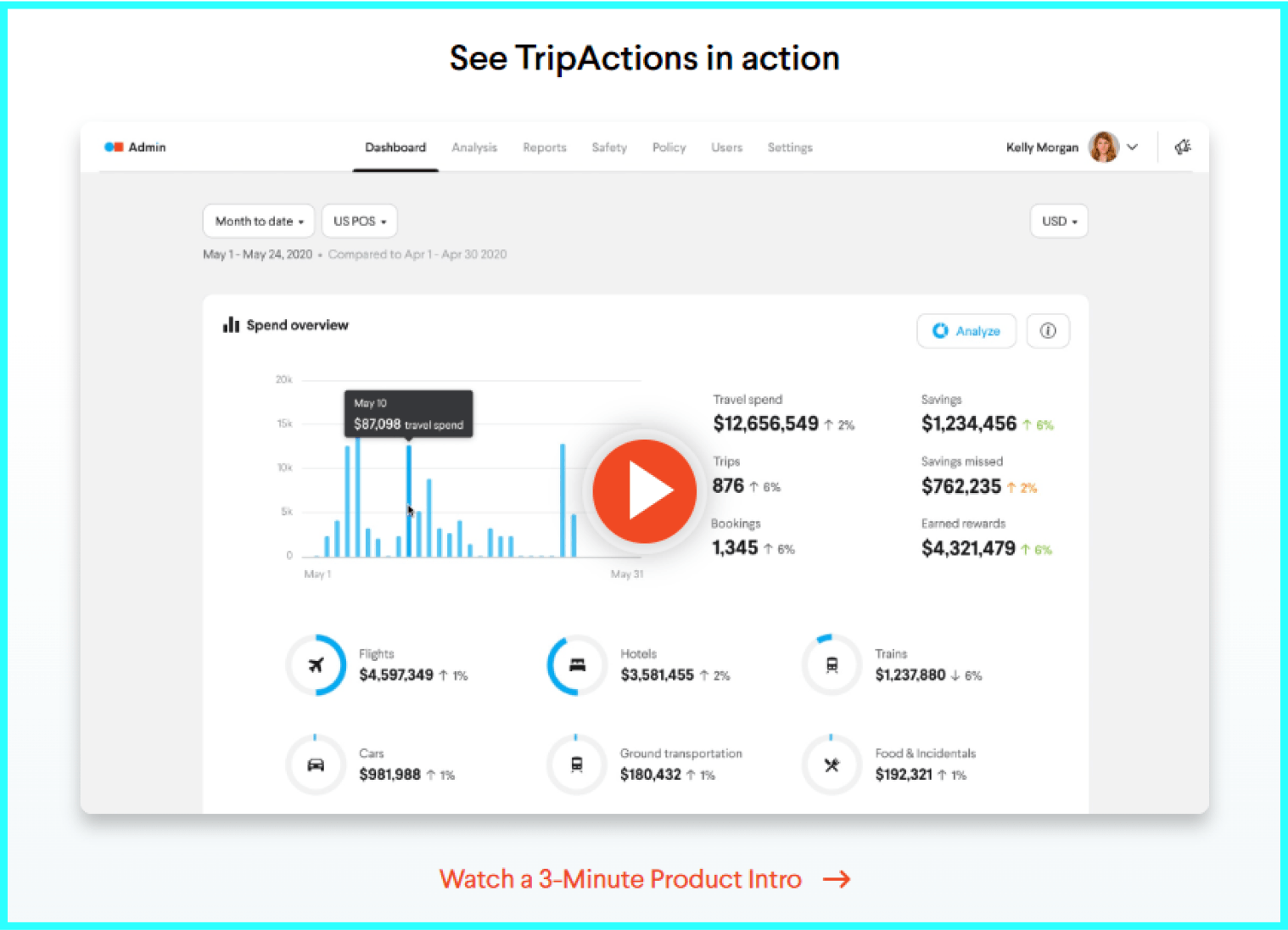
Now, their value proposition is after hero section of their home page — a group of four main benefits that users can get from their travel management platform.
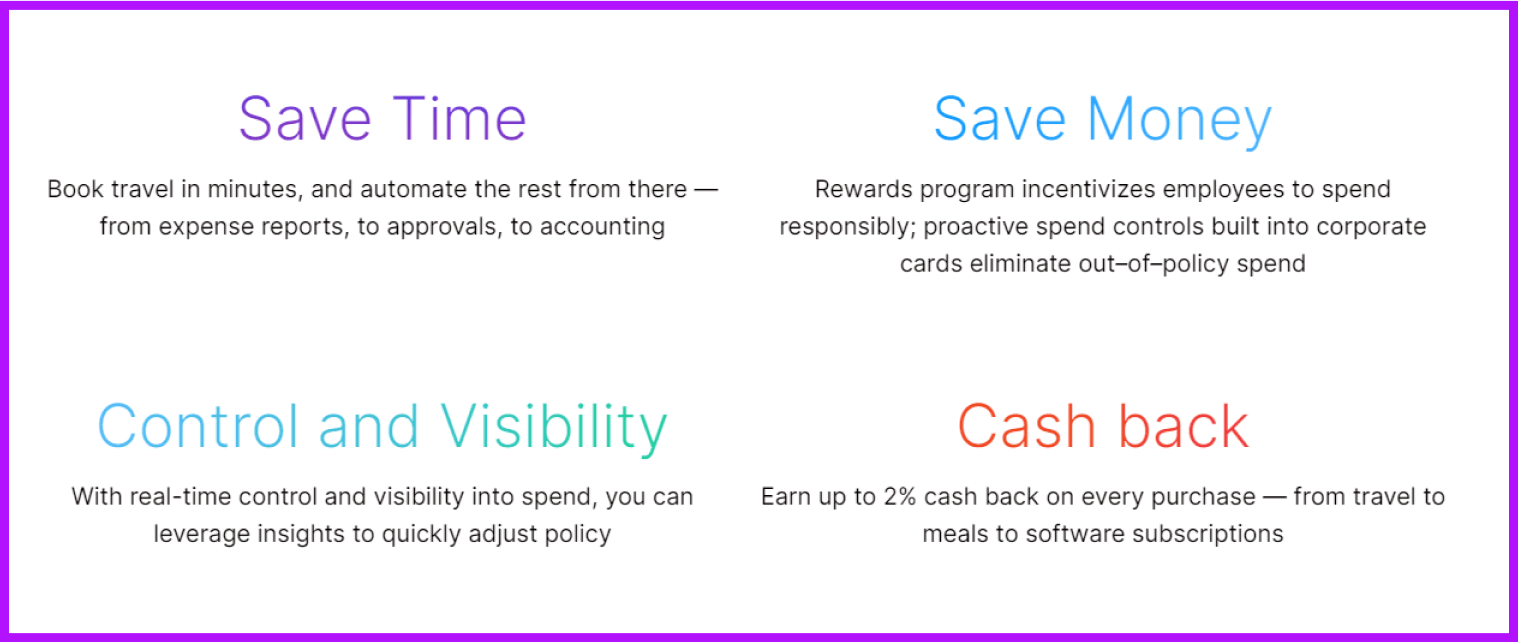
Through testing, the team likely discovered that reminding website visitors of these key benefits makes them more likely to take the next step in their buying journey — whether that’s scrolling down to watch the demo video, requesting a personal demo, or starting a free trial. Take a good hard look at your website and make sure the benefits of your solution stand out. That’s how you’ll be able to entice site visitors to start a conversation with you.
Mystery’s Retargeting Content Offers
Too often, marketers use their retargeting ads to attempt to convert website visitors immediately after their first visit. But that’s usually too soon.
Mystery knows that they’re selling a considered purchase, so they don’t jump the gun. Rather than trying to immediately convert recent site visitors into customers, Mystery offers free content through their ads.
In the post-2020 world, most of us have figured out how to work in a remote or hybrid environment. But many still aren’t sure how to build out their teams and culture. Mystery’s free ebook hits on this pain point.
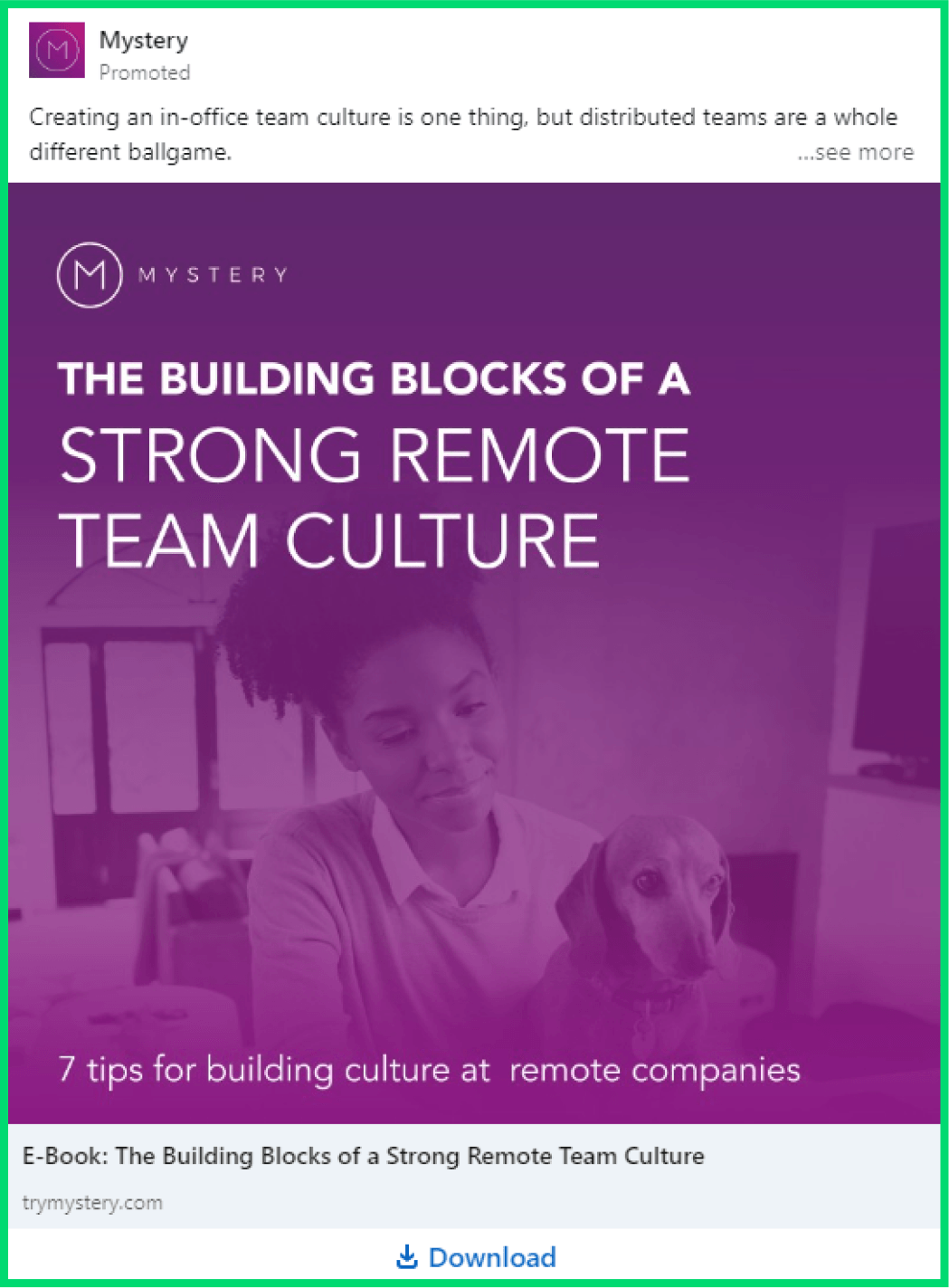
If you’re spending lots of money on your retargeting ads with little results, take a page out of Mystery’s book. Try guiding people to the next stage of your funnel, rather than attempting to push them to the end. And as always, test to see what happens.
Tenable’s Conversational Marketing
Tenable uses our Conversational Marketing solution to drive more, better-quality customer engagement on all of their web pages. Now their team has over 75 active playbooks tailored to fit the contents of each of their pages.
For example, on their Tenable.ad page, the chatbot starts out with a hook that is specific to the page, catering to a site visitor who is looking to secure their Active Directory. From there, the chatbot helps point the visitor in the right direction — whether that’s to start a chat with sales or get support.
This sort of flexibility has had a major impact on Tenable’s growth. Over the course of a year, the Tenable team was able to deliver qualified leads to sales three times faster than before, while also improving their conversation quality and length by 30%.
All this goes to show that personalization at scale drives better conversations. Conversational Marketing is a channel that offers endless opportunities for your business, so make sure your growth marketing team is testing new offers and chatbot sequences across a variety of pages.
Accelerate Your Growth Marketing Results with Drift
If you want to do growth marketing right, the most important thing is to engage with your buyers at every stage of your funnel and find ways to grow at every turn. Drift is the perfect partner for your next growth marketing endeavor.
Drift Conversation Cloud is a conversational platform designed to serve your customers at every point in the customer journey. With our Conversation Cloud, you can optimize interactions for every segment of your customer base — be it brand-new website visitors, leads who are on the fence about your solution, customers in need of support, or advocates riled up for your next live event. Get a demo today.
Don’t forget to download our new State of Conversations report to find out how you can better drive growth through authentic, real-time conversations.
